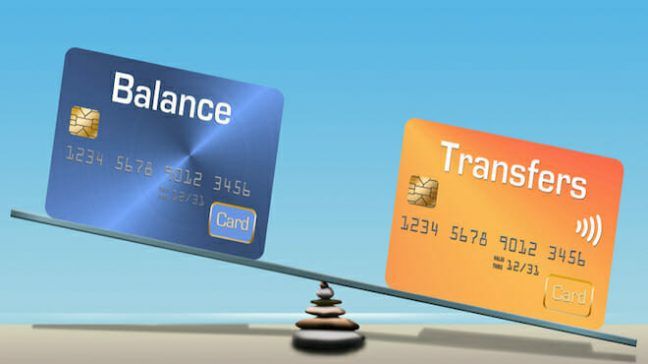
Balance Transfer in credit cards means that you transfer the amount you owe on one card to another card. By doing this you actually end up paying for the first card and owe that amount on the other credit card. One main reason why someone might go in for a balance transfer could be that the other card offers lower interest rates which would mean it would be cheaper to pay it back through the other card.
Features of Credit Card Balance Transfer
Transfer your other bank credit card balances to Card and enjoy a lower rate of interest. Save money and pay back through convenient payment options.
- Consolidate your multiple balances into one by transferring all of them to SBI Card
- Easy payment options
- Lower interest rates
- Due to the impact of COVID-19, Balance Transfer payment will be made via NEFT, directly to your other bank credit card account, instead of cheque. Stay at home, stay safe.
Documents Required
- Pan Card Number
- Passport Photo
- Address Proof
(Valid Driving License / Valid Passport / Aadhar Card) - ID Proof
(Valid Driving License / Valid Passport / Voter’s ID / Aadhar Card / Pan Card) - Credit Card Statement for 6 months
- Credit Card Photocopy
How to do Credit Card Transfer Balance?
The most important point to note about credit card balance transfer is that you can transfer only that amount to your new credit card which is within its credit limit. So, if your second credit card has a limit of Rs.50,000 and your pending dues from previous credit card are Rs.75,000, then only Rs.50,000 can be transferred to the new credit card under the balance transfer scheme.
There are forms which various banks furnish to facilitate application of credit card balance transfer facility. The following information needs to be furnished while applying for credit card balance transfer.
- Credit Limit
- Expiry date of the credit card
- Outstanding credit amount
- Credit card number
Benefits of Credit Card Balance Transfer
- Quick processing for balance transfer makes it easy for customers to avail and get rid of their pending dues
- Helps you save on the extra interest amount that you end up paying as a result of accumulated and pending credit card bill
- Convenient way to get rid of accumulated credit card debt as compared to other means of paying back credit
- Debts from one or more cards can be transferred when making use of credit card balance transfer feature
Points to Remember
- Availing credit card balance transfer reduces your credit limit in the same proportion.
- The lower interest rate for credit card balance is not applicable to new purchases that you make on your credit card. These transactions fall under standard interest rates offered by the credit card issuer.
- The best way to use credit card balance transfer is to pay off all your dues within the free or nominal interest rate period.
- Balance transfer is generally offered to customers who have been a credit card user for one particular company for at least a year. This is to ensure that credit holders do not keep hopping from one credit issuer to another in order to avail lower rates of interest.
- While you still may have credit left after transfer of previous credit card balance, it is always a good strategy to refrain from using your credit card until all balance transfer payments are paid and all subsequent charges are cleared.
